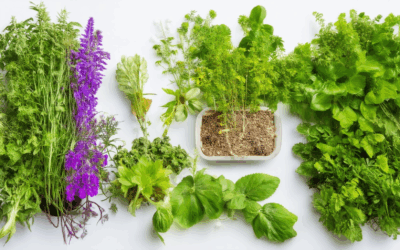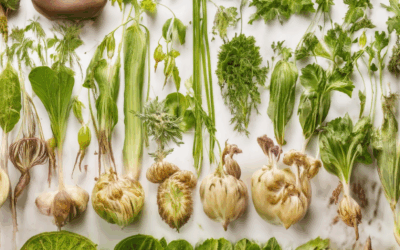Preserving traditional agriculture has emerged as a critical discussion point in modern agricultural practices, blending historical techniques with contemporary sustainable approaches. As global food systems face unprecedented challenges, the importance of maintaining age-old farming methods has gained significant attention. This article delves into the definitions, techniques, and benefits of preserving traditional agriculture, exploring its role in fostering environmental sustainability and cultural continuity. By examining the practices, challenges, and global perspectives surrounding traditional farming, this exploration aims to highlight its enduring relevance in shaping resilient and productive agricultural landscapes.
Preserving in Agriculture
Preserving in agriculture refers to the process of maintaining the quality, safety, and edibility of agricultural products such as crops, fruits, vegetables, and livestock through various methods. The primary goals of preservation are to reduce spoilage, extend shelf life, and minimize waste, thereby enhancing food security and economic viability.
Key Methods of Preservation
- Storage Techniques:
- Silos and Warehouses: These structures are used to store grains, seeds, and other dry goods safely, protecting them from pests and environmental factors like moisture and temperature fluctuations.
- Refrigerated Storage: Cold storage units are employed for perishable items like fruits, vegetables, dairy products, and meat, maintaining optimal temperatures to inhibit microbial growth and slow ripening processes.
- Canned Goods: Canning involves sealing food in containers under high pressure, which kills microorganisms and extends shelf life for up to several years.
- Packaging Solutions:
- Vacuum Packing: Removes air, significantly extending the shelf life of meats, cheeses, and other perishables by preventing oxidation and microbial growth.
- Modified Atmosphere Packaging (MAP): Uses controlled atmospheres with reduced oxygen levels to delay spoilage, particularly effective for fruits and vegetables.
- Biodegradable Packaging: An eco-friendly alternative made from natural materials, ideal for products requiring minimal preservatives and for reducing environmental impact.
- Temperature Control:
- Low-Temperature Storage: Essential for sensitive products like milk, eggs, and fish, where even slight temperature fluctuations can lead to spoilage.
- Chilling and Freezing: Used for extending the shelf life of items like bread, pizza, and ice cream, providing convenience for consumers and reducing waste.
- Processing and Value Addition:
- Canning and Fermentation: Techniques like pickling, fermenting, and drying transform raw ingredients into stable, shelf-ready products like preserves, sausages, and dried fruits.
- Genetic Modification: Advanced technologies can enhance resistance to pests and diseases, improving storage capabilities and reducing reliance on chemical preservatives.
- Harvesting and Handling:
- Timely Harvesting: Ensures crops are ready for preservation, maintaining quality and preventing field losses due to weather or pests.
- Post-Harvest Handling: Includes proper cleaning, sorting, and immediate cooling to preserve freshness and prevent spoilage during storage.
- Global Trade and Logistics:
- Export and Import Practices: Relies on efficient preservation methods to facilitate long-distance transport and storage in diverse climates.
- Regulatory Compliance: Adherence to international standards ensures safety and quality, building consumer trust and enabling market access.
Combining these methods allows for a holistic approach to preserving agricultural products, addressing both local and global needs. By employing effective storage solutions, innovative packaging, controlled environments, and value-added processing, the agricultural sector can mitigate losses, enhance sustainability, and contribute to food security.
Definition of Traditional Agriculture
Traditional agriculture refers to farming practices that have been passed down through generations, focusing on sustainable, environmentally friendly, and locally adapted methods. These techniques emphasize harmony with nature, preserving biodiversity, and maintaining long-term soil health.
Key Characteristics of Traditional Agriculture
- Sustainability: Techniques are designed to work with natural cycles, avoiding chemical inputs and synthetic fertilizers.
- Local Adaptation: Practices are tailored to specific regions, climates, and soil types, ensuring resilience and productivity.
- Organic Methods: Often incorporates organic matter, composting, and crop rotation to enhance soil fertility.
- Community and Environment: Traditionally, agriculture plays a role in supporting local communities and preserving ecosystems.
Benefits of Traditional Agriculture
- Reduces environmental impact compared to industrial farming.
- Improves soil health and fertility over time.
- Supports biodiversity and wildlife habitats.
- Produces nutrient-dense crops and foods.
Examples of Traditional Agricultural Practices
- Heirloom gardening, focusing on preserving rare and indigenous seed varieties.
- Companion planting to maximize crop yield and protect plants.
- Traditional irrigation systems, such as drip irrigation and rainwater harvesting.
- Farmers rotating crops to prevent soil degradation and pests.
Traditional agriculture is not just a method of farming—it’s a way of life that respects the land and ensures future generations can thrive. By adopting these practices, we can contribute to a healthier planet and a more sustainable food system.
Learn more about traditional agriculture and its importance
Types of Traditional Methods of Agriculture
Traditional methods of agriculture encompass a range of practices that have been passed down through generations, emphasizing sustainability, harmony with nature, and cultural heritage. These methods often focus on organic techniques, crop rotation, and animal husbandry, ensuring long-term soil fertility and biodiversity.
- Organic Farming: This method relies on natural processes, composting, and biological pest control to maintain healthy crops and livestock. It avoids synthetic chemicals, promoting instead a balance between crops and ecosystems.
- Crop Rotation: A practice where different crops are planted in succession on the same land. This helps prevent soil degradation, improves nutrient retention, and reduces pests and diseases.
- Companion Planting: Growing plants alongside each other to maximize resource use, deter pests, and improve pollination. Examples include planting nitrogen-fixing legumes near fruit trees.
- Animal Integration: Raising animals such as chickens, ducks, or cows in conjunction with crops. Their manure enriches the soil, and they provide natural pest control and fertilization.
- Traditional Irrigation Systems: Methods like drip irrigation, flood irrigation, or rainwater harvesting that conserve water and are adapted to local conditions.
- Local Seed Preservation: Saving and exchanging heirloom seeds to maintain genetic diversity and adaptability to specific climates and soils.
- Sustainable Land Management: Techniques such as terracing, agroforestry, and windbreaks that protect soil, reduce erosion, and promote tree growth.
These methods have been honed over centuries, reflecting deep understanding of ecological systems and cultural practices. They continue to inspire modern agricultural movements focused on environmental stewardship and food security.
For further exploration of traditional farming techniques, visit our traditional farming guide and discover how these methods can be integrated into contemporary practices.
What is the Biggest Benefit of Conservation Agriculture Over Traditional Agriculture?
Conservation agriculture offers numerous advantages over traditional farming methods, primarily focusing on environmental sustainability while maintaining or enhancing productivity. One of its most significant benefits is its ability to improve soil health, ensuring long-term agricultural productivity. By reducing tillage, minimizing chemical inputs, and incorporating organic matter, conservation agriculture helps preserve soil structure, prevent erosion, and maintain fertility, which traditional methods often compromise.
Another key benefit is water conservation. Through techniques like drip irrigation, rainwater harvesting, and efficient irrigation systems, conservation agriculture reduces water usage, becoming particularly important in arid regions. This not only lowers operational costs but also contributes to water sustainability for future generations.
Moreover, conservation agriculture promotes biodiversity by supporting pollinators and wildlife through practices like agroforestry and interspecific planting. This enhances ecosystem balance and resilience, making farms more self-sufficient and less reliant on external inputs.
One of the most compelling aspects of conservation agriculture is its capacity to build climate-resilient systems. By integrating trees, windbreaks, and diverse crop rotations, farmers can mitigate the effects of droughts, floods, and temperature fluctuations, ensuring stable crop yields despite changing climatic conditions.
Perhaps the most profound benefit, though, is the long-term enhancement of agricultural productivity. Unlike traditional methods that deplete natural resources, conservation agriculture ensures that soils remain productive, enabling sustained crop yields and food security for future generations.
How Can Farmers Adopt Conservation Agriculture?
Farmers can begin their journey with conservation agriculture by implementing small-scale changes, such as reducing tillage, adopting cover crops, and integrating livestock to recycle nutrients. Over time, these practices can be expanded to include more advanced techniques like agroforestry and precision agriculture, maximizing efficiency and sustainability.
By embracing conservation agriculture, farmers not only protect the environment but also position themselves as stewards of the land, ensuring the viability of agriculture for the long term. This approach aligns with global efforts to combat climate change, promote biodiversity, and create sustainable food systems.
Why Should Farmers Consider Conservation Agriculture?
Conservation agriculture offers cost-efficient solutions that reduce reliance on expensive inputs while improving farm profitability. Its emphasis on natural processes and resource efficiency makes it a viable strategy for farmers seeking to adapt to changing market demands and environmental challenges.
Ultimately, conservation agriculture is not just about protecting the planet—it’s about creating a brighter future for farming. By adopting these practices, farmers can ensure that their lands remain productive, their communities thrive, and their legacy endures for generations to come.
Learn more about sustainable farming practices .
Why is Traditional Farming Better?
Traditional farming offers numerous advantages that make it a preferable method compared to industrial farming:
- Eco-Friendliness: Traditional farming methods minimize chemical use, reducing pollution and preserving ecosystems.
- Biodiversity: It supports a wider variety of plant and animal species, promoting a balanced ecosystem.
- Lower Carbon Footprint: Smaller operations with local distribution reduce reliance on heavy machinery and long-distance transport.
- Nutrient-Rich Foods: Natural farming practices often yield foods with higher nutrient content due to fewer synthetic interventions.
- Community Economic Support: It boosts local economies by supporting small businesses and creating jobs in rural areas.
- Local Food Availability: Traditional farming helps meet the demand for locally-sourced goods, fostering community connections.
- Self-Reliance: It promotes essential life skills, enabling communities to grow their own food and reduce dependency on global supply chains.
- Soil Health: Use of compost and natural fertilizers enhances soil quality, ensuring long-term agricultural productivity.
Leading Countries in Conservation Agriculture
Conservation agriculture is a sustainable farming practice that focuses on environmental protection, soil health, and water efficiency. Several countries have emerged as leaders in adopting and promoting these practices.
- Brazil – Known for its extensive agricultural land and significant investment in environmental policies, Brazil has made strides in implementing conservation agriculture practices to reduce deforestation and promote sustainable farming.
- United States – The U.S. has a robust agricultural sector with various government programs encouraging farmers to adopt conservation practices, such as cover cropping and reduced tillage, to improve soil health and water conservation.
- China – With a rapidly growing population and increasing demand for food, China has been actively promoting conservation agriculture through government initiatives and incentives to ensure long-term agricultural sustainability.
- Australia – Australia has large areas of arable land suited for conservation agriculture, particularly in regions prone to droughts, where water-efficient farming methods are crucial for productivity.
- Israel – Renowned for its innovative farming techniques, Israel has successfully integrated water-efficient irrigation systems and crop rotation practices, making it a leader in sustainable agriculture.
These countries lead in conservation agriculture due to their combination of large agricultural areas, government support, and commitment to sustainable practices. Each plays a significant role in advancing global efforts toward environmental stewardship and food security.








0 Comments